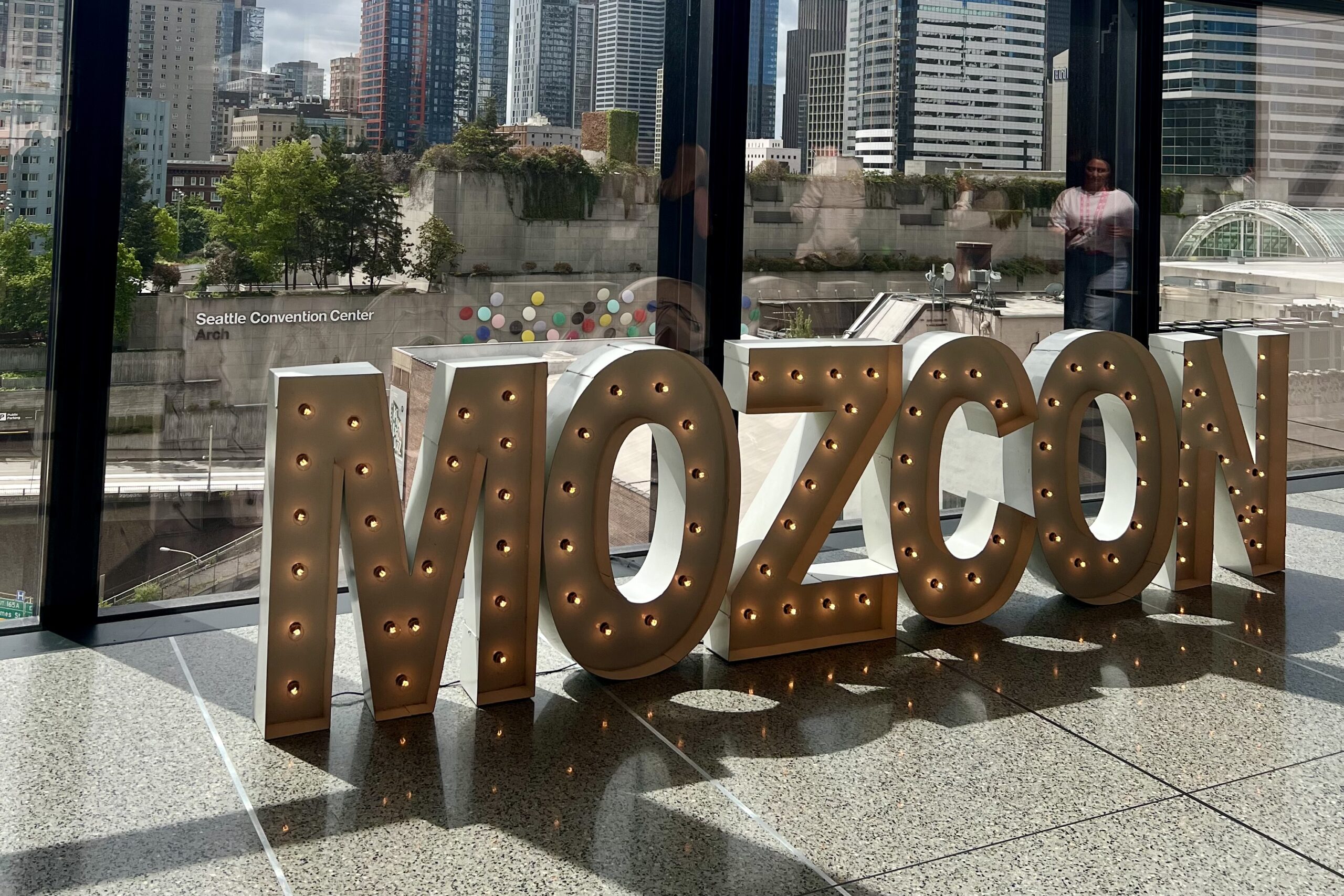3 Key Content Creation Insights from MozCon 2024

In June 2024, I had the absolute pleasure of attending my first MozCon. My mind was blown several times by how deep the SEO world actually is, and I was pleased by how many talks underscored the importance of knowing your audience.
Understanding who your ideal targets are and what motivates them is an essential part of strategic marketing. Read on for 3 content creation insights gleaned from MozCon 2024.

Knowing HOW your audience searches will help you craft compelling content
Garret Sussman, Demand Generation Manager at iPullRank, gave an eye-opening talk breaking down the psychology of search. He detailed various biases influencing how we search and the results we receive.
For example, asking the internet, “Is coffee healthy for you?” will yield vastly different results than “Is coffee bad for your health?” The distinction is important. It challenges marketers to remember their psychology coursework and return to the consumer’s mind.
Watch out for biases that could be influencing search results:
- Confirmation bias—Consumers may choose search results supporting what they already believe.
- Position bias—Consumers tend to interact with the first few items listed on a search engine results page (SERP).
- Familiarity heuristic—Consumers favor familiar brands. If they’ve seen them often, they’ll likely gravitate toward them.
- Authority bias—Consumers tend to trust authorities even if they’re not accurate.
- Halo effect—Consumers are more apt to feel positive about products, brands and people if they’re affiliated with a brand they already trust.
What does this mean for content creators and marketers?
We need to dive deeper into our target audiences and develop a true understanding of who they are, what motivates them, their likes and dislikes, the media they consume and potential biases that might influence decision-making. We also need to develop relevant online content despite (or perhaps due to) their cognitive biases.
How does AI factor in? Consumers are getting more comfortable using AI-powered large language models (LLMs) like ChatGPT to search for information, and they’re asking longer and more complicated questions than they do with traditional search engines.
Using AI to search can lead to even more bias. Lean in with strategic keywords, partnerships and affiliations to ensure your ideal target audience connects with your brand, and be sure to double-check the results—AI isn’t always right.
Tapping into emotions can drive impressive conversions
Everyone loves nostalgia, and it is everywhere these days. A simple scroll through social channels will show countless content creators parodying the 80s, 90s and 2000s, much to Millennial and Gen X delight. Big brands are doing the same things, and it works because of the way it makes consumers feel.
In The Power of Emotion, Talia Wolf, Founder and Chief Optimizer of GetUplift, reminded us that everyone makes decisions based on emotions, even in the world of B2B.
People are eight times more likely to buy a more expensive product or service if they easily see the personal value it provides. While features, cost and impact hold weight, decisions boil down to categories:
- Internal motivation/self-image—How will this product or service make me feel?
- External motivation/reputation—How will this product or service influence how other people think or feel about me?
What’s a marketer to do? Focus on the WHY. What’s in it for your customer? How will your product or service make them feel or be perceived in the workplace? How will it improve their lives? Leverage emotions to drive conversions.
- Step 1: Make it about the customer—Conduct audience research to uncover and leverage key consumer insights.
- Step 2: Use consumer insights to audit your strategy—Is your content relatable? Does it hit the WHY? What’s missing?
- Step 3: Weave emotion into your content—Tell stories. Make it impactful. Inspire your audience to feel good about themselves and your solution.
- Step 4: Weave emotion into your design—Use powerful images. Leverage design and UX to guide audiences to desired actions.
By honing in on emotional outcomes and placing customers at the center of our narratives, we can move into more meaningful content that actually resonates. It’s not only about what we can offer. Instead, it’s how our solution will improve our customers’ lives.
How does AI factor in? AI can be a powerful tool to help us better understand specific target audiences. AI resources like SparkToro and BuzzSumo were designed for audience research, giving marketers an inside look at how specific groups approach purchase decisions. We can then use those insights to create targeted content that drives conversions.
Behind the AI Curtain: Insights into the Invisible
It was interesting and refreshing to hear Britney Muller, Founder of Data Sci 101, describe AI as lazy, pattern-making machines. She urged conferencegoers to stay skeptical because while AI is a huge technological advancement transforming the world, it’s not perfect—not by a long shot.
Should we be using it in marketing? Yes. Should we completely trust it? No. Remember, AI crawls the entire internet and serves the most likely solutions to queries. The internet is as full of misinformation as it is fact, so it is essential to remember that LLMs are not actually search engines.
✅ AI/LLMs are good with:
- Language translation
- Content summarization
- Brainstorming
- Question-answering
- Repurposing content for different mediums
- Simplifying long or complex text
- Correcting spelling and grammar
❌ AI/LLMs are not good with:
- Common sense
- High-level strategy
- Reasoning and logic
- Emotional intelligence
- Anything they haven’t been specifically trained to complete
AI must be trained in order to improve—we want it to improve so it can eventually complete more labor-intensive tasks, leaving us time to focus on strategy and creativity. It’s important to note that AI reflects and magnifies its training data, so it is essential AI be fed high-quality content from the start.
Marketers can help improve AI by submitting detailed prompts and providing feedback on whether the AI tool hit the mark. In addition, be wary of sharing proprietary information. Once AI knows it, there’s no control over how it’ll be used.
How can we get the best results from AI? Write better prompts. Explain tasks as you would to teammates, provide examples and describe your audience. Be as detailed as possible to hone in on the right target audience.
Final Reflections on MozCon 2024
I highly recommend this conference for strategic marketers! The world of SEO is changing at lightning speed, and content creators must stay at the forefront or be lost in the dust.
These content creation insights from MozCon 2024 are the tip of the iceberg, with many more talks delving into technical and local aspects of SEO. Check out the Moz Blog for daily recaps (Day 1 Recap, Day 2 Recap) and keep learning.